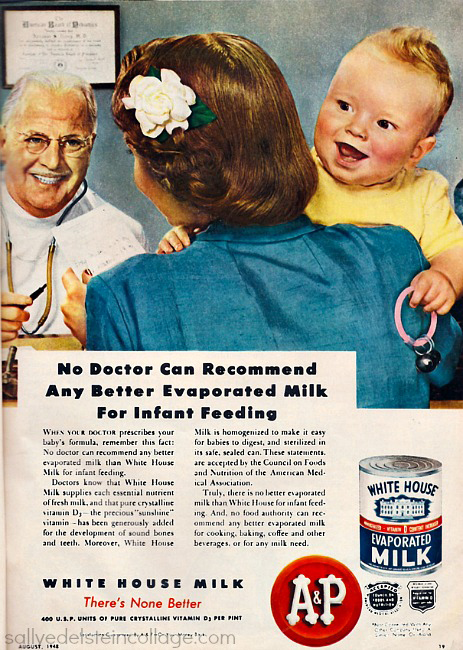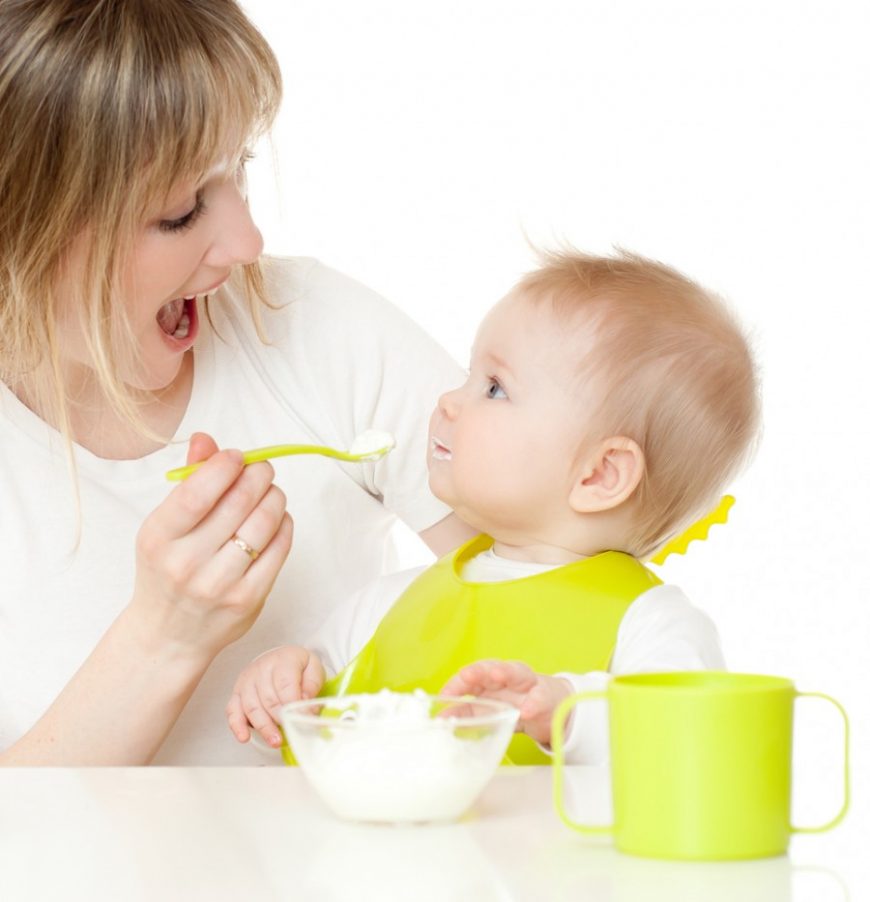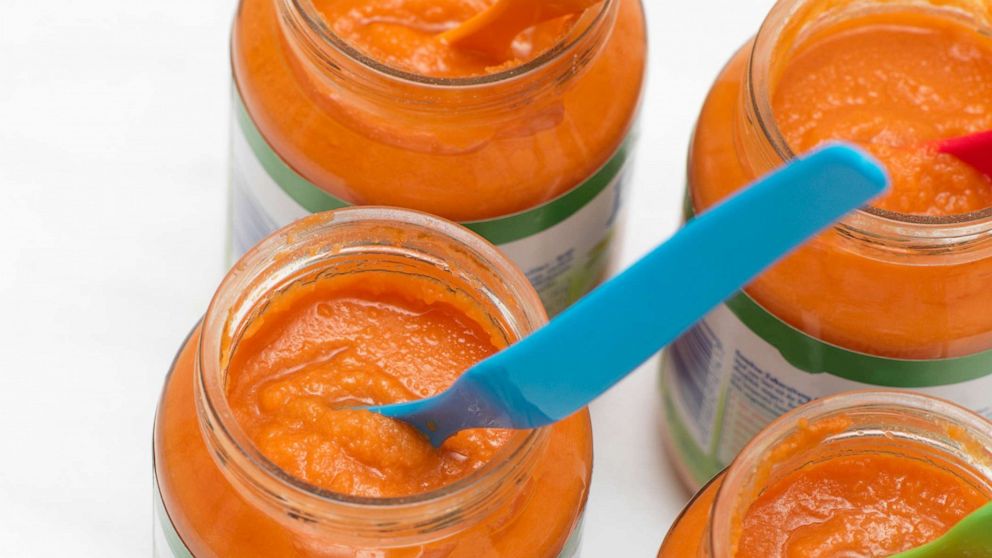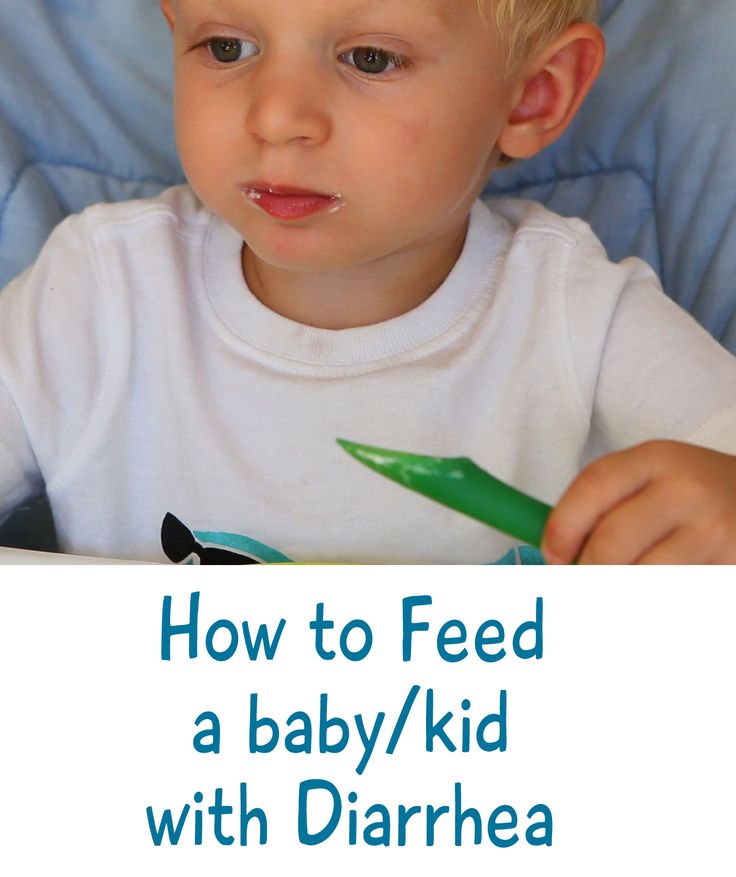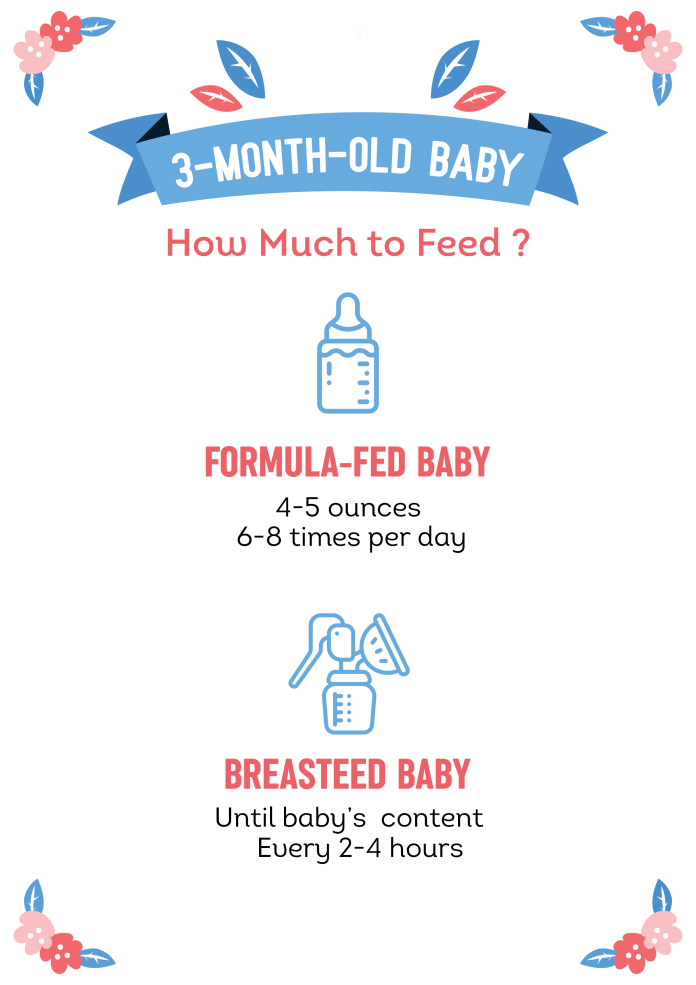Baby refusing spoon feeding
Baby Refuses to be Spoonfed! Here's What to Do
Is your baby batting the spoon away? Does she close her mouth tightly as the spoon comes closer? It may be time to rethink the way you are feeding her.
When Baby Refuses to Eat from a Spoon – Why your baby won’t eat from a spoon and what you can do to make mealtimes relaxed & fun.
Suddenly, your baby has refused to eat when you try to spoon feed her. She may refuse to eat from the spoon in a variety of ways, expressing her displeasure in ways that may be upsetting to parents. Relax Mom & Dad, your little baby is growing up and refusing to eat from a spoon is just part his natural progression to feeding himself. When baby refuses to be spoon fed – it’s actually a milestone! Bring on the Finger Foods – this might just get your baby excited about eating and make the transition from the spoon stress-free.
When Will My Baby Refuse to be Spoon Fed?
There is a period between 8 and 10 months of age (may be earlier), that your baby may begin to refuse being fed food from a spoon. It is around this age range that babies really begin to become more aware of themselves and what they want and asserting independence by refusing to be spoon fed is just another milestone.
Why is My Baby Refusing to be Spoon Fed?
As mentioned, babies begin to find their own independence in a variety of ways. They may show favoritism for a certain toy or lovie and become insulted when you offer them a toy that is not the “toy du jour”. Being able to assert their own preferences for eating is another way for babies to head off down independence lane. They may try to grab the spoon away from you or bat at the spoon as it comes close to their mouths. Many babies will simply clamp their lips shut and refuse to open up for a bite. These behaviors are perfectly normal and going with baby’s flow will help create positive food relationships and experiences.
Please note that many babies will also refuse to be spoon fed if they are feeling ill or if they are teething. Tiredness may also affect baby’s eating habits.
What Do I Do When My Baby Refuses to be Spoon Fed?
Take a few deep breaths and relax.
We have found that when our babies reach this new milestone, offering them a bowl and a spoon is one of the simplest ways of appeasing and encouraging them. We mix up their meals as usual and let them try to feed themselves. You could also experiment with a Baby Led Weaning method – simply offer baby’s meals in finger food form.
Oh yes indeed, this is quite messy and you’ll be cringing as food flows down the highchair and over those plump, cute little baby legs; the food will make it’s way through baby’s hair and probably into the ears too. And just when you think your baby will never manage to find her mouth – Success. Sit back and watch your baby delight in her newfound sense of independence and accomplishment.
When Should I Stop Feeding My Baby With A Spoon?
Only you will know when your baby is ready to stop being spoon fed. All babies are different and will refuse the spoon at different ages and stages.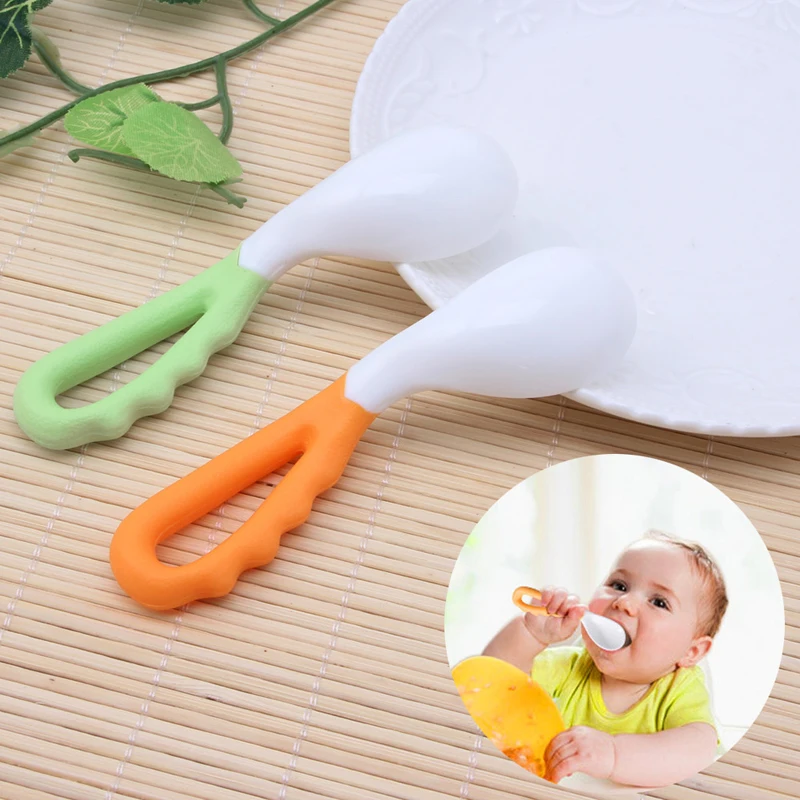 There are many babies who have never been spoon fed. Baby Led Weaning is an approach to infant feeding that is catching on around the world. Babies who are fed via this method never eat “traditional” baby food purees. Instead, babies are offered age appropriate foods that are soft cooked and mashed or smooshed or diced very small. The foods are offered to baby and baby eats the foods as he or she sees fit.
There are many babies who have never been spoon fed. Baby Led Weaning is an approach to infant feeding that is catching on around the world. Babies who are fed via this method never eat “traditional” baby food purees. Instead, babies are offered age appropriate foods that are soft cooked and mashed or smooshed or diced very small. The foods are offered to baby and baby eats the foods as he or she sees fit.
Read our Baby Led Weaning article to learn more.
Offer More Self-Feeding Meals
You may begin to offer your baby more meals made up of foods that baby is able to feed herself whenever you feel she is ready. Don’t worry too much about the amount she eats. Offering a variety of nutritious foods during the day will ensure that your baby is getting all the nourishment she need. Remember, breast milk and/or formula remain important sources of nutrition until baby is 12 months of age.
Remember, always consult with your pediatrician regarding introducing solid foods to your baby and specifically discuss any foods that may pose allergy risks for your baby.
This site complies with the HONcode standard for trustworthy health information: verify here.
SHARE ON FACEBOOK SHARE ON PINTEREST
What to do when baby won’t touch food
If you have just started solids and are not sure how to go about it, check out our course videos on starting solids, baby-led weaning and responsive spoonfeeding and consider downloading our Starting Solids bundle.
There are many reasons why a child may not be interested in eating, but what do you do when babies or toddlers aren’t interested in even touching their food?
Chase the whyIf a baby is not eating, they are trying to communicate something. For some babies, they simply might not have the interest, skill, or desire to eat at that moment; for others, it may be more complicated given their history (reflux, a bad gag, negative associations with the highchair, etc.) It’s imperative to listen to baby’s cues in any of these situations while guiding them to learn.
The most important thing you can do is bring calm confidence to the table and believe that baby can learn the skills for eating. In other words, stay calm and don’t give up!
If baby is 6 months old or youngerYou’ve done all the reading about starting solids. You have the highchair, bib, and you know what food you want to introduce first. And then, in the blink of a camera, at the height of your anticipation, your bubble bursts. Baby doesn’t bring a single thing to their mouth.
Or maybe you started with spoon feeding and decided to make the switch to finger food. You cut the food just right, set the meal just so, but instead of enjoying it, baby doesn’t touch a thing.
At 6 months of age or younger, babies are often just not ready. Evaluate whether baby is truly ready for solids (see our page on readiness or check out our video) and make sure baby is truly meeting all of the developmental signs before starting solid food.
Consider waiting a week or two.![]() If baby is less than or around 6 months old and showing signs of readiness, but doesn’t engage with food offered, try not to worry too much. Many babies at this age are just not cognitively ready to self-feed, even if they are showing the motor milestones for readiness. This is normal.
If baby is less than or around 6 months old and showing signs of readiness, but doesn’t engage with food offered, try not to worry too much. Many babies at this age are just not cognitively ready to self-feed, even if they are showing the motor milestones for readiness. This is normal.
Even with spoon-feeding, many babies will turn away from the spoon when they are not ready. This is communication saying they are not interested or ready yet. Listen to what baby is telling you. Sometimes the youngest eaters just need another week or two to wrap their heads around eating.
Avoid feeding schedule changes. Encouraging or pushing baby to eat before they are ready can lead down a bumpy road of food refusal. At this age, avoid feeding schedule changes to make baby hungry enough to try solid foods. Remember: Baby’s primary nutrition should be from breast milk or formula until 12 months of age. Plus, an overly hungry young baby is not primed to learn.![]() Babies who are too hungry and don’t yet have the skills to self-feed will end up melting down at the table. (Cue screaming for the breast or bottle.)
Babies who are too hungry and don’t yet have the skills to self-feed will end up melting down at the table. (Cue screaming for the breast or bottle.)
Let baby watch you eat, often. Even before you start solids, bring baby to the table. Pull up the bouncing chair so baby can watch you eat or sit baby on your lap. Channel a dinner party vibe—laugh, smile, and enjoy your meal so baby can see the fun of eating. When baby is ready to start solids, pull baby’s highchair up to the table or put baby on your lap while YOU eat. Babies learn from watching us, and many young babies need more modeling to realize that food goes in our mouths.
Get baby’s attention. Tap their highchair tray or table with your fork or finger, call their name, and make eye contact. Once they are paying attention, bring the food to your mouth and smile. This is very important with spoon-fed babies. Spoon-fed babies learn that food comes on a spoon, it’s put in their mouth, and swallowed.![]() Picking up food with their hands and bringing it to their mouth is an entirely different story—the concept that hands bring food to the mouth is brand new. See the tips below for helping baby pick up and bring food to their mouth or dive in to our video on transitioning from spoon feeding to self-feeding.
Picking up food with their hands and bringing it to their mouth is an entirely different story—the concept that hands bring food to the mouth is brand new. See the tips below for helping baby pick up and bring food to their mouth or dive in to our video on transitioning from spoon feeding to self-feeding.
Talk to baby and describe the food: “This is delicious spaghetti with Grandma Mary’s famous sauce! It’s tangy and sweet at the same time!”
Model with your mouth open. Throw your manners out the window and chew with your mouth open so babe can see what you are doing. When you swallow, point to your stomach and say: “The spaghetti went all the way to my belly!” You may feel a bit silly, but modeling is a game-changer for many young babies.
Go BIG with food sizes. It may seem counter-intuitive, but for young babies, bigger is better. Watch how a 6- to 9-month-old baby interacts with toys, and you’ll notice they use all of their fingers and the palm of their hand to grasp things.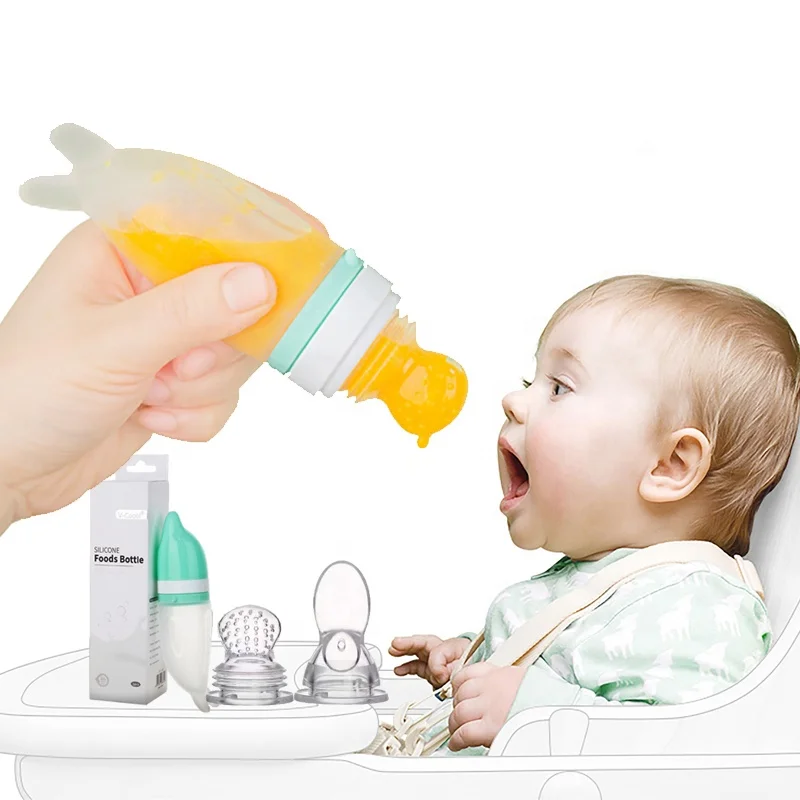 Bigger pieces of food are much easier to grasp, hold, and control. Learning to chew is challenging work, and we want to help make everything else (i.e., reaching and grasping) as easy as possible. A baby struggling with a smaller piece of food may give up because they don’t have the skill to grab it yet.
Bigger pieces of food are much easier to grasp, hold, and control. Learning to chew is challenging work, and we want to help make everything else (i.e., reaching and grasping) as easy as possible. A baby struggling with a smaller piece of food may give up because they don’t have the skill to grab it yet.
Bigger pieces of food are also easier for baby to manage in their mouth. The brain more readily notices and registers big pieces. Young babies are more likely to explore and move big pieces around in the mouth successfully.
You want to provide just the right amount of challenge. Bigger pieces of food provide baby with a fun challenge but aren’t too difficult to reach, grasp, and move around with their tongue. When tasks are too hard, babies may give up and (in their own way) say, “No, thanks!” Fine motor control improves as baby gets closer to 9+ months, and they’ll start using their thumb and index finger to pinch smaller items. This is a great time to size down in food so they can utilize their new skill.
If baby is just starting to self-feed after a period of spoon-feeding, they might not know what to do with food in front of them. Remember, they’ve been practicing a specific eating skill (accepting a spoon) and need to learn a different way to eat.
Make sure baby comes to the table happy. If babe has a meltdown the minute you put them in the highchair, start there. Take a break from the highchair and serve a meal with baby sitting on your lap or have a picnic on the living room floor. Some babies love a little excitement on the way to the table—try dancing, twirling, or crawling! Set baby up for success and start the meal happy.
Model your daily eating routine. This is especially important if you are transitioning from spoon-feeding to baby-led weaning. Remember: Everything baby is doing is a new skill, and they need to see how it’s done to understand better.
Imitate baby’s facial expressions and encourage them to imitate you. Watching to learn is a huge part of infancy. Think about it this way—the more you enjoy something, the more interest your baby has in it. The more you look at your phone, the more baby wants to play with it, right? Enjoy eating your meal, and baby will want to participate in eating, too!
Watching to learn is a huge part of infancy. Think about it this way—the more you enjoy something, the more interest your baby has in it. The more you look at your phone, the more baby wants to play with it, right? Enjoy eating your meal, and baby will want to participate in eating, too!
Bring baby’s attention to the food. Tap baby’s tray near the food to make sure they are visually attending to it, call their name, and say, “Look!” Sometimes a simple, single cue is all a baby needs to acknowledge and touch food on a tray. Note: While not common, a lack of sustained attention can be a sign of autism. If baby is not attending to the food after repeated attempts to get their attention to it, consult your health care professional.
Offer food vertically in the air. Make it easy for baby to pick the food up by offering it to them in the air. You can also try standing food upright to make it easier for baby to grasp. (Such as banana sticks in yogurt with the banana standing upright.![]() ) If baby is still not interested, try taking a bite of the food yourself and then offering that piece to baby in the air. If you offer something like yogurt, oatmeal, or other puree-type foods, you can load the spoon and hand it to your child or hold the spoon in your mouth and lean toward baby to grab.
) If baby is still not interested, try taking a bite of the food yourself and then offering that piece to baby in the air. If you offer something like yogurt, oatmeal, or other puree-type foods, you can load the spoon and hand it to your child or hold the spoon in your mouth and lean toward baby to grab.
Offer the food from your own mouth. Put your manners aside and try this tried-and-true feeding therapy trick: hold the food between your teeth, lean toward baby, and let them take the food out of your mouth with their hands.
Remember: Step one is for baby to interact with the food; if they are reaching for and/or grasping the food items, you’re making progress! Patience is key. We don’t expect babies to roll from tummy to back consistently the first time they try. Likewise, we don’t expect babies to eat consistently in the beginning, either. Their primary nutrition source remains breast milk or formula until 12 months of age. Any table food they consume is a plus.
Bring baby to the table a bit hungry. Consider offering breast or bottle 1.5-2 hours before mealtime, so they have a bit more hunger drive to eat the food on their tray.
However, if a 9- to 12-month-old baby tries to eat but appears frustrated and irritable at the table, it could be a sign that they are too hungry and want food but have yet to hone their fine motor or chewing skills—cue the hanger. This could be a sign that baby needs an appetizer, so they come to the table with a desire to eat, ready to learn and build skill, but aren’t hangry. Consider a small breast or bottle-feed 30-45 minutes before mealtime or offer easy-to-eat food to start the meal.
For toddlers 12 months old and upHere are some additional tips to encourage food exploration and new skills for toddlers resistant to touching foods or who have been spoon-fed and are now transitioning to self-feeding table foods.
Practice makes perfect. Toddlers learn by doing. They may need additional practice scooping with their hands and using containers. You can encourage and practice these skills by scooping water with cups in the bathtub or scooping dry items like rice or beans with spoons or their hands.
They may need additional practice scooping with their hands and using containers. You can encourage and practice these skills by scooping water with cups in the bathtub or scooping dry items like rice or beans with spoons or their hands.
Let them practice feeding you. If the child is okay touching food but won’t feed themselves, ask them to feed you. Bring their attention to a piece of food, hand it to them, and ask them to put it in your mouth. If you have pets (and feel comfortable with little hands near the pup’s mouth), ask the toddler to feed the dog.
Pretend play! Feed stuffed animals or dolls and explain what’s happening: “You fed bunny a piece of cheese! It’s going to go all the way to her belly and help her grow big and strong!”
Model and narrate more. Toddlers still learn a lot from watching and modeling. Demonstrate feeding yourself and explicitly verbalize what’s happening: “Mama is putting this banana in her mouth! And then she’s going to chew it with her teeth! Watch!” Then point from your mouth to your belly and explain: “The banana is going all the way to my belly to help me feel strong!”
Engage in sensory play outside of mealtime.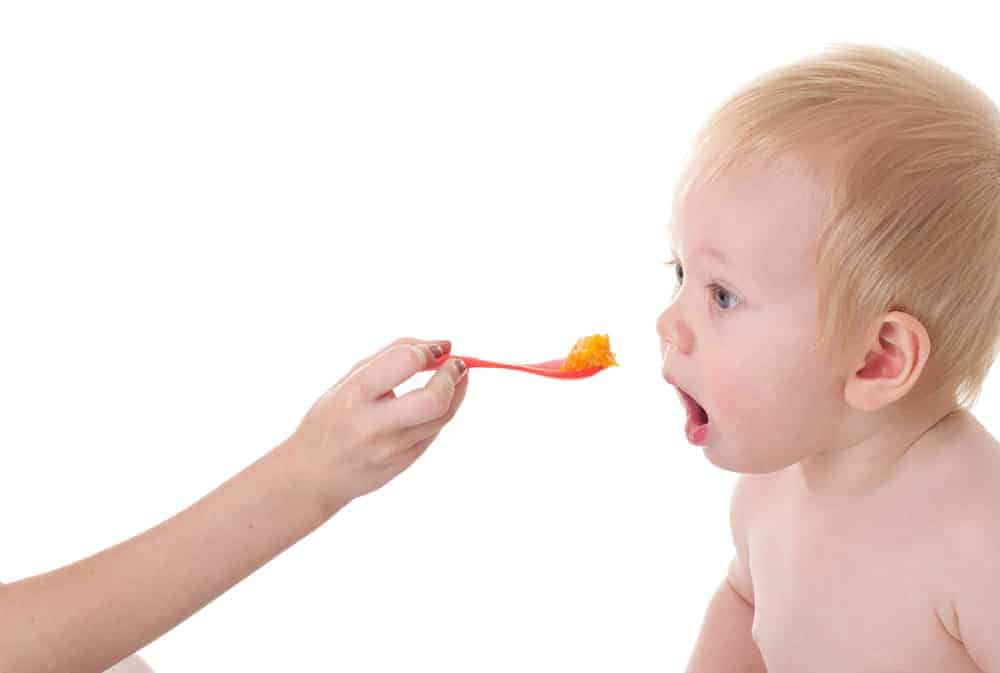 If the child does not want to touch certain textures (i.e., wet, cold, sticky), try sensory play outside of mealtime. Go for finger paints, shaving cream, or slime. If texture avoidance happens with more than just food, consider talking to a pediatrician. An occupational therapist trained in sensory integration may be able to help.
If the child does not want to touch certain textures (i.e., wet, cold, sticky), try sensory play outside of mealtime. Go for finger paints, shaving cream, or slime. If texture avoidance happens with more than just food, consider talking to a pediatrician. An occupational therapist trained in sensory integration may be able to help.
Explore different shapes, sizes, and props. Some toddlers respond well to making food more fun. Try serving food with a toothpick or cut food in a fun shape. Mango in bite size pieces on a plate may seem totally boring… but mango on toothpicks? Fun!
Stop spoon-feeding. If a toddler knows they will always be spoon-fed to meet their hunger need, they are less likely to try feeding themselves, which is more challenging for them to do. Tips for this transition:
- Start meals slightly earlier than usual so they are hungry but not starving or hangry.
- Use the modeling tips above and model for them to feed themselves.

- If you are confident they can chew foods, consider not spoon-feeding them and see if they self-feed. If they choose not to eat, allow them to learn that hunger is a natural consequence if they don’t feed themselves. This is age appropriate and should work rapidly. If you have any concerns, discuss a plan of action with a feeding therapist or health care provider.
- Offer a snack that they can self-feed a little bit later to help them solidify the skill.
For more support on transitioning babies and toddlers from spoon-feeding to self-feeding, see our video here.
If the child has not had the chance to learn how to chew foods and they appear to struggle with consistencies other than purees, consider talking to your pediatrician about a referral for feeding therapy with an occupational or speech therapist to help build chewing skills.
When baby will touch everything but wet foods like yogurtWill baby or toddler interact with everything except wet textures like yogurt, oatmeal, or sauces? Some kids are more sensitive to this type of texture and may need help learning to tolerate it.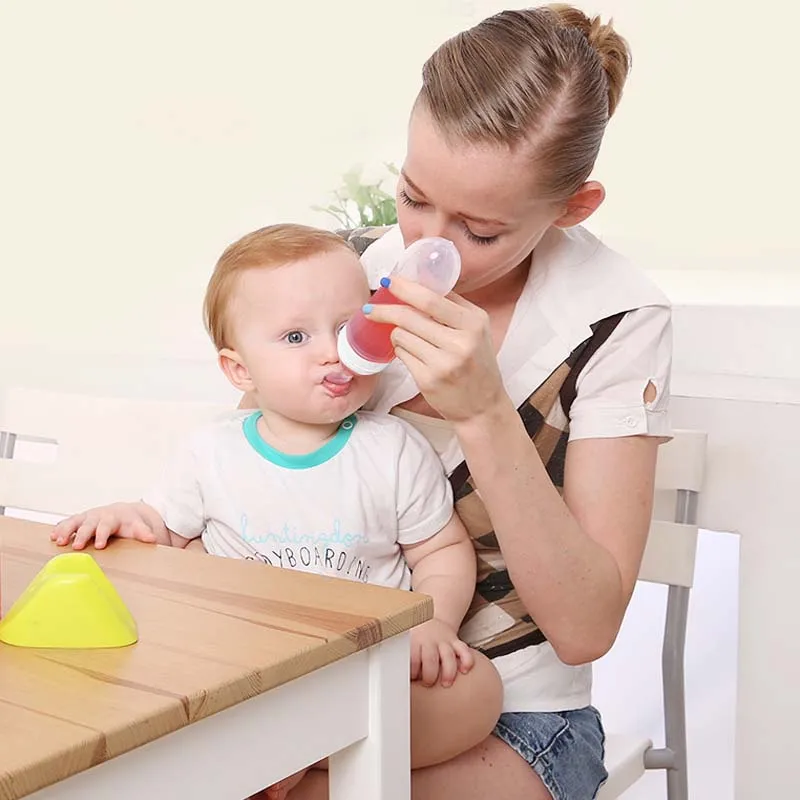
Practice self-feeding with a spoon. This is a skill babies and toddlers need for life, so practicing with pre-loaded spoons or scooping with utensils are great options. Offer the spoon but don’t put it in baby’s mouth: stop a few inches away from their face and let baby reach for the spoon to pull it toward their mouth.
Provide opportunities for sensory play. There are many ideas online for “sensory bins” for babies and toddlers, but consider playing in wet grass, painting with ketchup, making edible slime or finger paints, or playing with sponges in the bath or at a water table.
Let baby feed you. Will they touch the food to bring it to your mouth? This can be an excellent gateway to touching the food for themselves.
Avoid over-cleaning their hands. Sometimes when babies and toddlers know that messy play ends with a wipe down, they altogether avoid the activity anticipating the ending. It’s tough watching kids get super messy, but there’s a massive benefit in letting them get sticky. Make clean-up fun and lighthearted. Go to the sink, turn the water on, and have a splashing party.
It’s tough watching kids get super messy, but there’s a massive benefit in letting them get sticky. Make clean-up fun and lighthearted. Go to the sink, turn the water on, and have a splashing party.
Generally, a lack of interest in touching food is not typically a concern; it’s often just a sign the child needs more exposure and practice. However, consult your pediatric health care professional if the child is:
- Gagging, retching, or vomiting at the sight or touch of food.
- Extremely sensitive to certain textures (like wet, sticky, etc.). They may need extra help with sensory processing. Talk to your health care professional for a referral for occupational therapy to help them better regulate their body.
- Not gaining weight well despite drinking breast milk or formula.
- Not consuming any solid foods after 8 months of age. Note: Spoon-fed babies and toddlers in transition to finger food and self-feeding may have a period of food refusal.
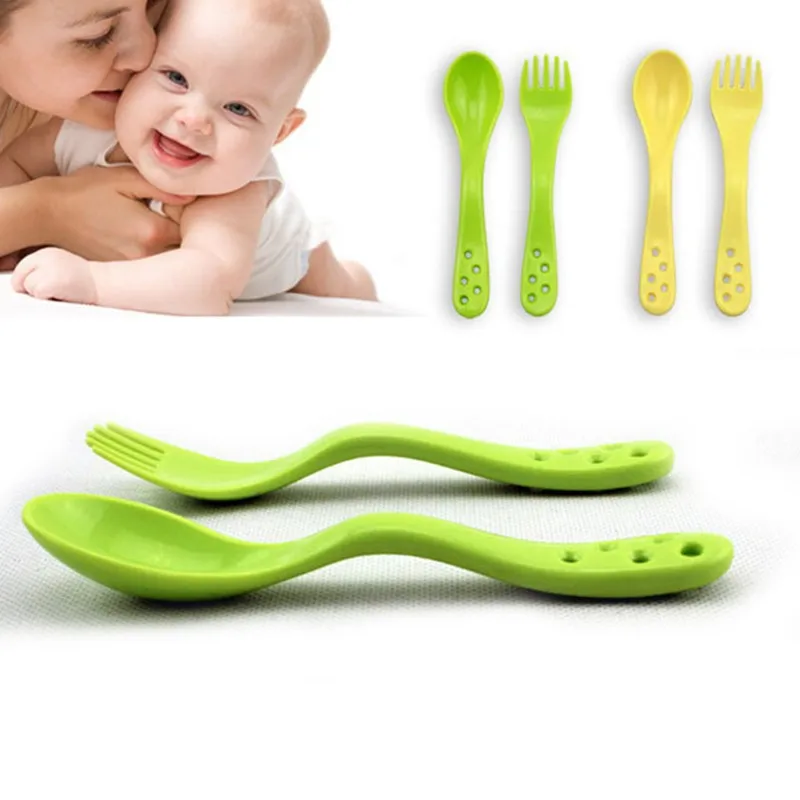 See our video for tips on how to bridge this transition.
See our video for tips on how to bridge this transition.
- Not accepting any chewable foods after a couple of weeks of exposure to solid foods (9 months or older). If baby is younger than 9 months and not accepting chewable foods, employ the tips above for baby’s age and give it a bit more time.
- Swallows all chewable food whole without attempting to chew and is 12 months old or older.
- Not attending to the food on the tray after attempts to get their attention (calling their name, tapping the tray, etc.). While not common, a lack of sustained attention can be a sign of autism.
No matter the age of baby, remember the division of responsibility. There are certain things you can control and certain things you cannot:
You control what foods the child is offered, when food is offered, and how you show up to the meal (i.e., your attitude).
Your child is in control of whether they eat and how much.
No matter how hard you try, you cannot control if or how much your child will eat.
Trying to control their intake is a slow spiral down a rabbit hole of picky eating and food refusal. Try one or two strategies at the meal, and if your child is still not interested, enjoy your own meal, and move on. Tomorrow is another day.
How you show up to the meal is much more important than you probably realize. The literature on picky eating shows that parental concern about intake and pushing babies to eat when they are not interested consistently leads to picky or selective eating later.1 2 3 4
So, take a deep breath and try to have fun as kiddo instinctively fumbles through learning to eat.
If you are concerned about your child’s weight gain or ability to eat table foods, talk to your child’s pediatrician. A feeding therapist can provide new ideas and additional support.
Reviewed by:
Kary Rappaport, OTR/L, MS, SCFES, IBCLC
Kimberly Grenawitzke, OTD, OTR/L, SCFES, IBCLC, CNT
- Emmett, P.
 M., Hays, N. P., & Taylor, C. M. (2018). Antecedents of picky eating behaviour in young children. Appetite, 130, 163–173.https://doi.org/10.1016/j.appet.2018.07.032
M., Hays, N. P., & Taylor, C. M. (2018). Antecedents of picky eating behaviour in young children. Appetite, 130, 163–173.https://doi.org/10.1016/j.appet.2018.07.032 - Cardona Cano, S., Hoek, H. W., & Bryant-Waugh, R. (2015). Picky eating. Current Opinion in Psychiatry, 28(6), 448–454.
- Steinsbekk, S., Bonneville-Roussy, A., Fildes, A., Llewellyn, C. H., & Wichstrøm, L. (2017). Child and parent predictors of picky eating from preschool to school age. International Journal of Behavioral Nutrition and Physical Activity, 14(1).
- Cole, N. C., An, R., Lee, S.-Y., & Donovan, S. M. (2017). Correlates of picky eating and food neophobia in young children: a systematic review and meta-analysis. Nutrition Reviews, 75(7), 516–532
Son does not want to eat with a spoon: 10 tricks to get it
Some parents become desperate because their children do not want to spoon feed them. These children close their mouths when approaching a spoon and refuse to eat with it.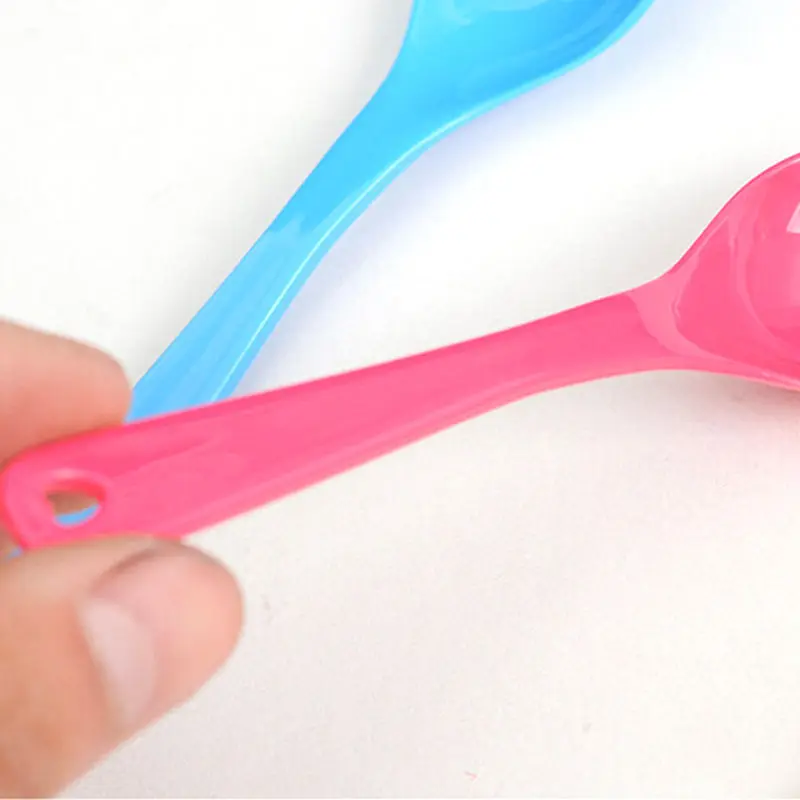 Today we will tell you 10 tricks if your child does not want to eat with a spoon so that you accept it naturally and do not reject it. It is best that your child is full and does not have constant difficulty eating.
Today we will tell you 10 tricks if your child does not want to eat with a spoon so that you accept it naturally and do not reject it. It is best that your child is full and does not have constant difficulty eating.
Index
- 1 Eat with a spoon
- 2 10 tricks if your baby doesn't want to eat with a spoon
Eat with a spoon
Babies enjoy liquid food because it is very similar to milk, both breast milk and formula. It's like continuing your diet. The problem arises when they start eating solid food. This is where children can begin to move away from the spoon, introducing them to other foods such as mashed potatoes.
Some babies are easy and willing to accept a spoon. But the rest is not so simple. It's a shock for a baby when he can't eat and suck like he used to. . Feeding ceases to be pleasant, as before, and refuses to feed with a spoon.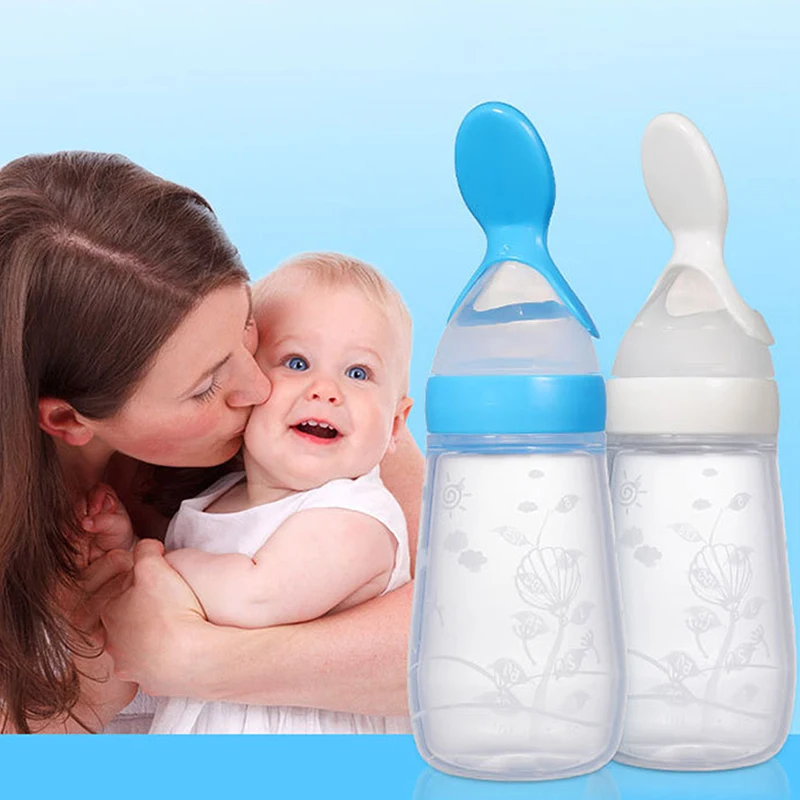
If your baby doesn't want to spoon feed or you're about to start spoon feeding, we'll leave you with 10 tricks to make spoon feeding time as adaptive as possible for your baby and gradually take it in without crying.
10 tricks if your child does not want to eat with a spoon
- Get him used to a new food item : Spoon. A month before weaning or starting solid foods, it's best to get used to the spoon. You can give him a plastic baby to get to know it and play . Having seen how older people use it, he may already begin to try to use it. Thus, it will not be a strange object that suddenly appeared.
- You can try at the end of a bottle or teat give a small tablespoon of grated fruit . This way, you will experience new textures and flavors in peace.
- Give small measuring spoons . Don't fill the spoon too much and they should be small so they fit well in your mouth.
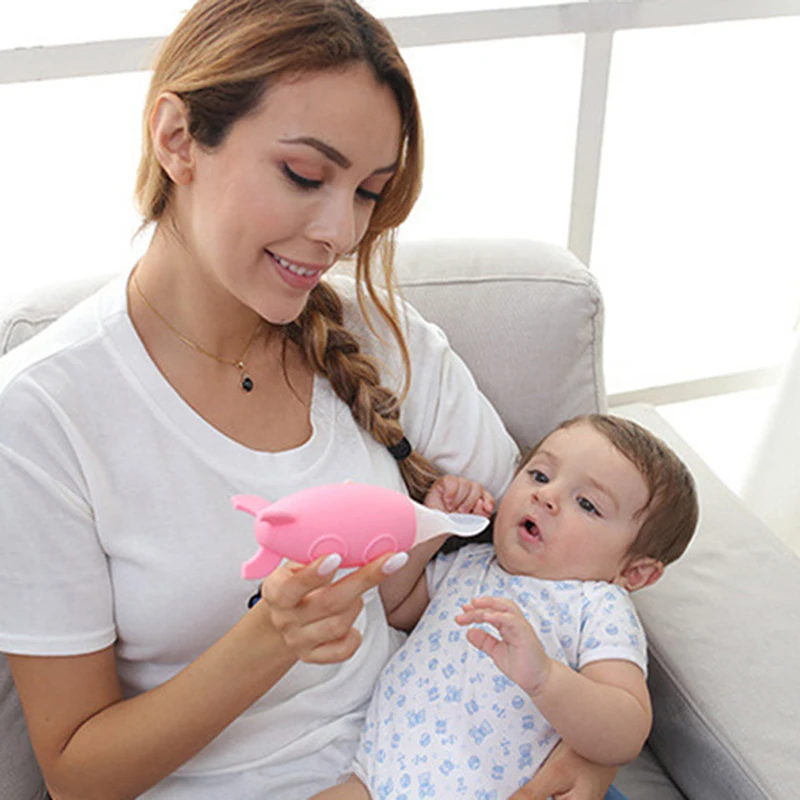 Don't put a whole spoon in there. Bring it to his lips and let him open his mouth. This is the best way to get used to it.
Don't put a whole spoon in there. Bring it to his lips and let him open his mouth. This is the best way to get used to it. - Take advantage of the first attempt to give him his favorite puree. . Don't try anything new when you try it for the first time. There will be too much new, and it will be more normal for him to refuse it. Instead, use your knowledge and spoon in whatever puree you know he likes.
- Don't insist . If you forcefully insert a spoon into it, it will shut its mouth and catch the spoon mania. If you refuse it, perhaps your time has not yet come. Forcing it will only create a bad association with the spoon. Try making bottle puree by enlarging the hole in the nipple and try again in a few weeks.
- Do not use a spoon if you are very hungry. . If you can't eat at the rate that you will suckle, it's more normal for you to give it up if you're very hungry.
- If you refuse it after eating a little, You may already be full or tired of eating.
 Try to give him what's left in the bottle.
Try to give him what's left in the bottle. - Use your upper lip to pick up food . With a spoon, food falls out of the corners easily, so we can tilt the spoon so that the puree falls and use the upper lip to clean the spoon.
- Eat with the whole family . After placing him in his highchair with the rest of the family, he already feels like another member at mealtimes. This will encourage you to use your silverware in the same way adults do.
- Have patience . Sometimes inserting a spoon is easy and sometimes not very difficult, or there will be days you take it and days you don't. We must be patient with this new habit.
Because remember... this is all new to your little one and he has to gradually get used to it.
The content of the article complies with our principles of editorial ethics. To report a bug, click here.
You may be interested
The child does not want to eat from a spoon - DUCsever.
 Ru
Ru Contents:
What to do if the child refuses complementary foods (does not eat porridge), and does not want to eat from a spoon
For the first four months, the baby ate exclusively breast milk or mixtures. The time has come for the first complementary foods, because by the fifth or sixth month, the baby will not have enough milk nutrients for full growth. By the first half of the year, the mucous membrane of the baby's throat can already adapt to swallowing solid particles of food.
It is worth introducing the first complementary foods for a child only when he gains twice as much weight as at birth and sits steadily. Be sure the baby should have a so-called "food interest", he should be interested in the food that the rest of the family consumes.
We teach the baby to new food
It is better to start complementary foods with vegetable puree. It has all the necessary advantages for a new baby food:
It is necessary to accustom the child to complementary foods gradually. We start with one or two spoons before the second or third breastfeeding. In mashed potatoes, in addition to vegetables, you can add half the yolk and a little vegetable oil. For a month, the amount of puree is brought to 150 g (three-quarters of a glass) and one breastfeeding is completely replaced. You can also divide complementary foods into several doses. It is important that the baby enjoys food.
Recommended. Details on when to start the first complementary foods of an infant and how to start complementary foods.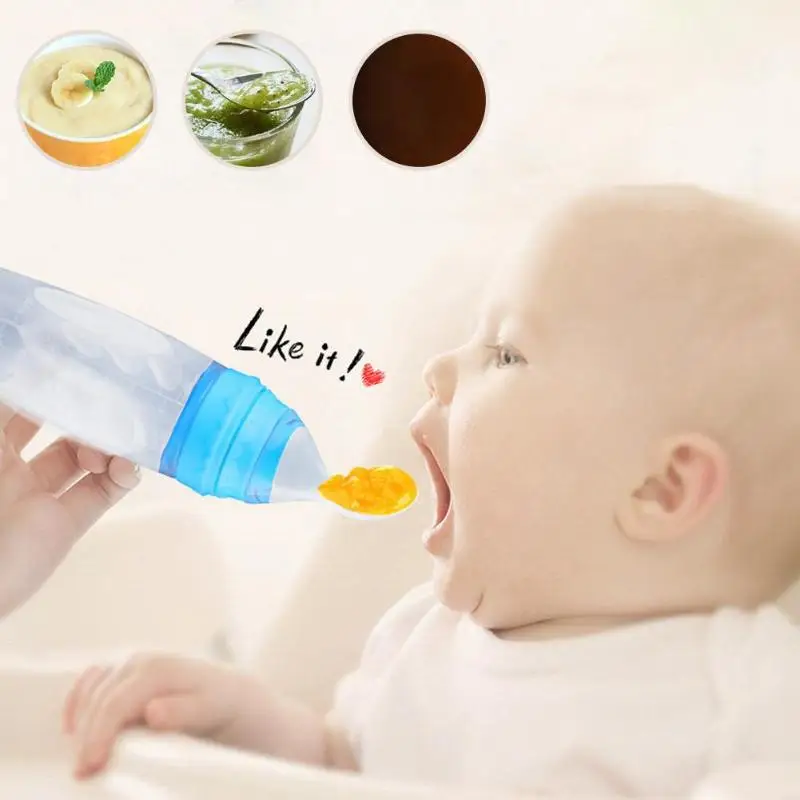 Lots of useful tips and tricks
Lots of useful tips and tricks
Nutritional innovations often don't go smoothly, sometimes the child doesn't want to eat complementary foods. Of course, not all children willingly join new foods. Taste buds in babies are well developed and from birth they get used to the sweet taste of milk. It is important to immediately establish contact with the baby regarding food, otherwise further feeding will turn into torture on both sides.
What to do if the child refuses to eat complementary foods
So, the first and second attempts to feed the baby failed. The child does not want to eat complementary foods and what to do if he spits out food or even starts to vomit.
 Taste can be developed not by coercion, but by the application of small pedagogical tricks.
Taste can be developed not by coercion, but by the application of small pedagogical tricks. Here are some practical tips if the child does not want to eat complementary foods:
It happens simply that the child does not feel well: teeth are being cut or the tummy hurts, so he refuses to eat complementary foods.![]()
Do not distract your baby with toys or try to feed discreetly. In the first case, the formation of the wrong habit of eating at the game will begin. Inconspicuous feeding will not bring any benefit to a small organism. When the baby does not want to eat, salivation in the mouth and the production of gastric juice are reduced, and the food is poorly digested.
An excellent way to accustom a baby to new food is the method of pedagogical feeding. The child is simply seated at a common table and given to try what he wants in scanty quantities: a piece the size of a pea or a sip of liquid.
Doesn't want to eat with a spoon
Start feeding your baby solid food with a spoon. It is good if it is a silver product (silver prevents the development of microbes), but a plastic spoon is also suitable (plastic spoons are safe for the child, and thanks to the bright colors, they attract attention, so the baby will be happy to eat from it).
In terms of size, it is better to take a coffee shop first, then move on to a tea one.![]()
The sooner the baby gets acquainted with cutlery, the less problems there will be with complementary foods. It is desirable from the third month to give water to drink only from a spoon. If the child does not want to eat complementary foods from a spoon, then while accustoming to a spoon, you should not feed him from the nipple, it is better to let the baby first take food with his hands, let him try to eat himself. Then give me a spoon. The child and everything around will be smeared, but it is much easier to clean everything than to suffer further later. Gradually, the baby will get used to the spoon and it will be great to eat from it.
Porridge is given to a small member of the family at the age of 6-7 months. First, one teaspoon of buckwheat, rice or corn. Gradually, the volume of complementary foods increases to 150 g, and the range of cereals expands. It is necessary to cook porridge for a six-month-old baby on water or a decoction of vegetables, without adding milk and sugar.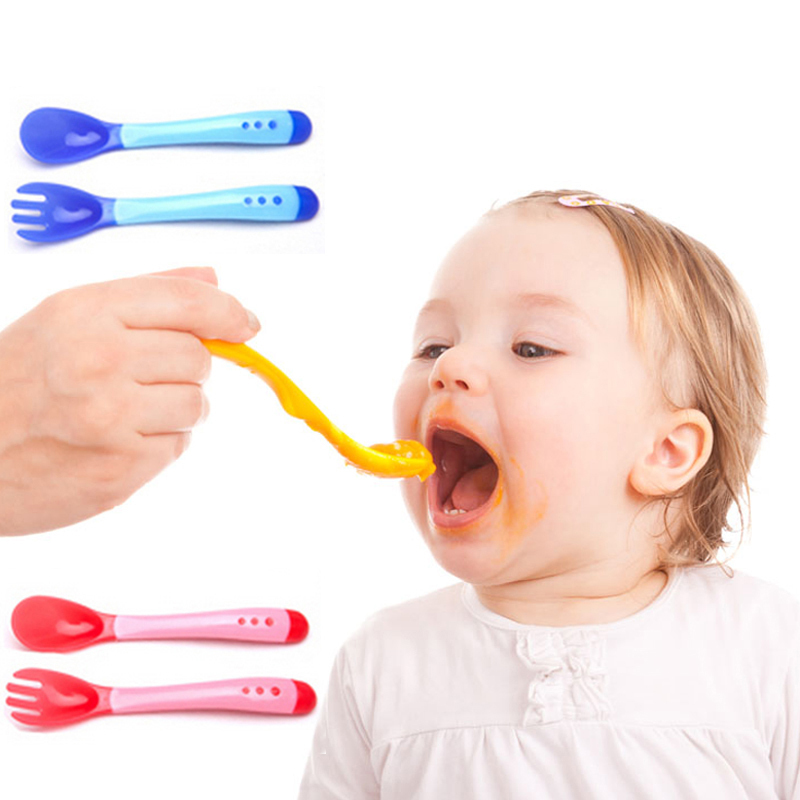
As with vegetable puree, it happens that the child does not want to eat porridge. In this case, it is also worth cheating a little. Add some breast milk to the finished dish. The taste will become more familiar to the baby, which will allow him to quickly get used to the new food.
Complementary foods are not always a substitute for breastfeeding, but only a necessary supplement to the complete nutrition of the baby. It's like getting to know "adult" food. It's okay if the child flatly refuses mashed potatoes and porridge. Be patient. Watch the baby, because in this case he is the most important adviser.
razvitie-krohi.ru
What to do if the child does not eat complementary foods?
When a child reaches the age of six months, his body begins to need a number of elements that are not present in breast milk in sufficient quantities, so it is time to introduce new products. If the child does not eat complementary foods, parents begin to worry, because this can provoke the development of negative consequences. But do not get upset ahead of time. You just need to show a little patience and imagination.
But do not get upset ahead of time. You just need to show a little patience and imagination.
If your baby does not want to eat the first food, the first thing to do is to find out the reason for this behavior
Reasons why a baby refuses complementary foods
There are a number of reasons why a baby refuses complementary foods, spitting out new foods, or constantly acting up during feeding. It is important to identify these factors and eliminate their impact:
- Breast milk seems to be native to the baby, and new taste sensations cause him anxiety and rejection.
- Sometimes mothers are so eager to introduce complementary foods that they can simply overdo it with persuasion. Against the background of such actions, offers to try complementary foods are associated in a newborn with negative emotions.
- If the mother overlooked, and the first spoonful of complementary foods seemed bitter or tasteless to the child.
- The child does not feel well.
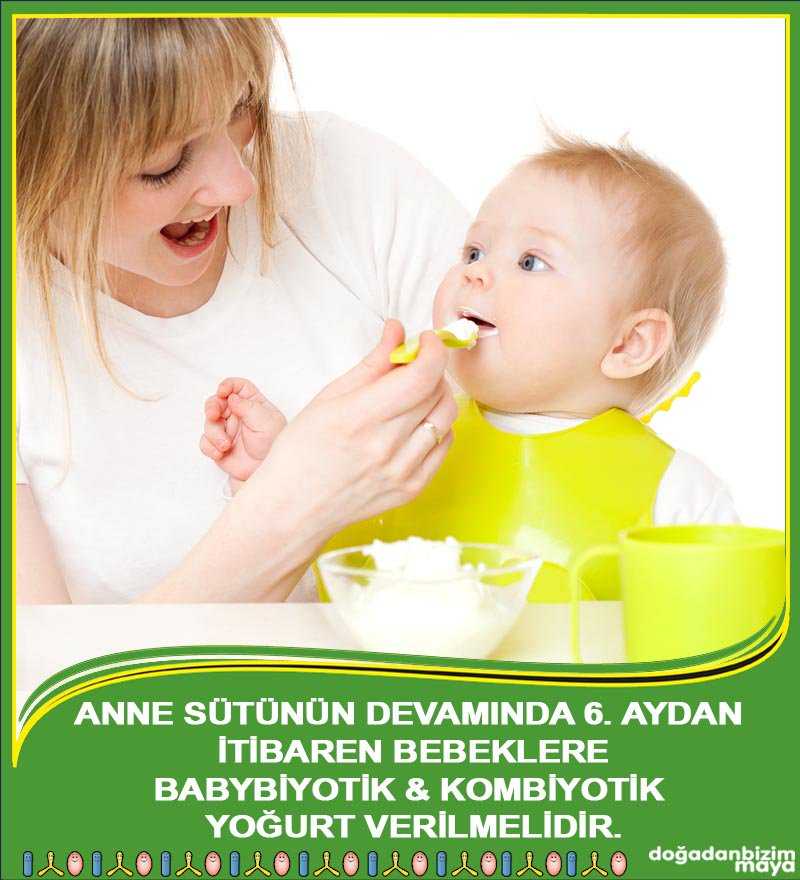 For example, he is teething or he is overheated.
For example, he is teething or he is overheated. - Despite reaching the right age, the baby's body is not yet ready to accept foreign food. This can be caused by insufficient development of the digestive or enzyme systems of the child's body.
- Walking in the fresh air provokes appetite, so immediately after returning home, you can give the baby complementary foods.
- In the early stages, additional nutrition can be diluted with breast milk, this will facilitate the perception of new tastes.
- If a child refuses complementary foods because of poor general health, attempts to try new foods should simply be postponed until the child has recovered.
- If the baby refuses only certain types of complementary foods, such as vegetables, you need to mix them with those foods that the child's body is already accustomed to.
- When refusing to eat due to the usual whims, you should try to arouse the child's interest in a new process. You can use the "help" of toys or adults.
- When children do not even want to open their mouths, when they see a spoon in their mother's hands, you need to address them by name, ask them to open their mouths, while opening their own.
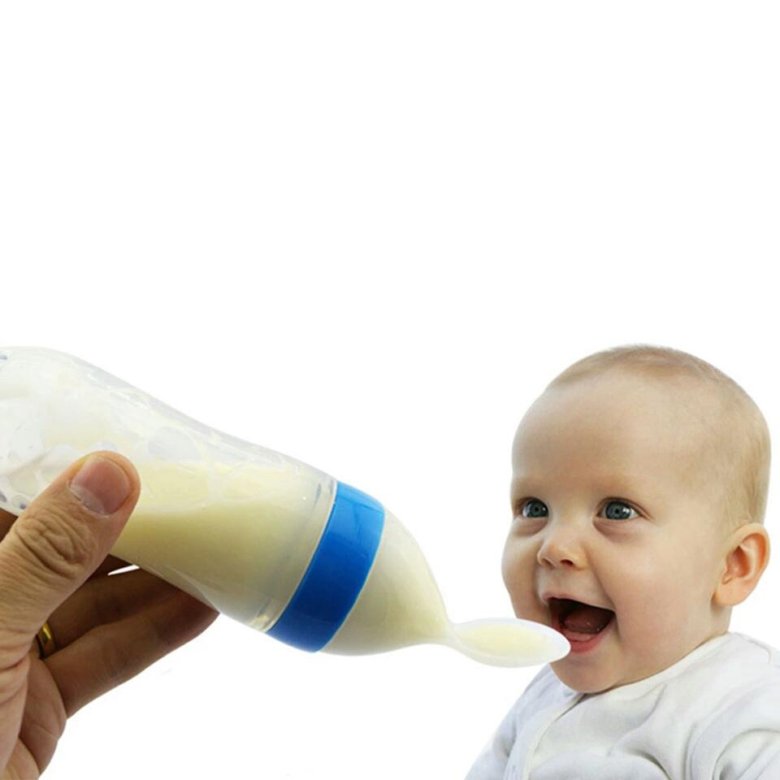 At a subconscious level, babies begin to copy the actions of their parents and repeat their facial expressions.
At a subconscious level, babies begin to copy the actions of their parents and repeat their facial expressions. - In the period from 6 to 9 months, children develop observation and a desire to imitate others, so if the baby is simply present during the parents' meal, sooner or later he will reach for a spoon and demand "adult" food.
- If an infant refuses one type of food, it does not mean that he will not be interested in other foods. The child does not want to eat porridge? It is worth trying to give him fruit.
- It is important to remember that in the initial stages of introducing supplementary nutrition, feeding should be one-component. This will allow you to determine which types of foods the child does not like and to identify possible allergic reactions.
- A child should not be punished for an overturned plate or porridge smeared on the table. These are signs of independence, the suppression of which can lead to further refusal to eat.
- If a child refuses a food that he used to like, you need to take a week or even longer break, after which interest in the product may return.
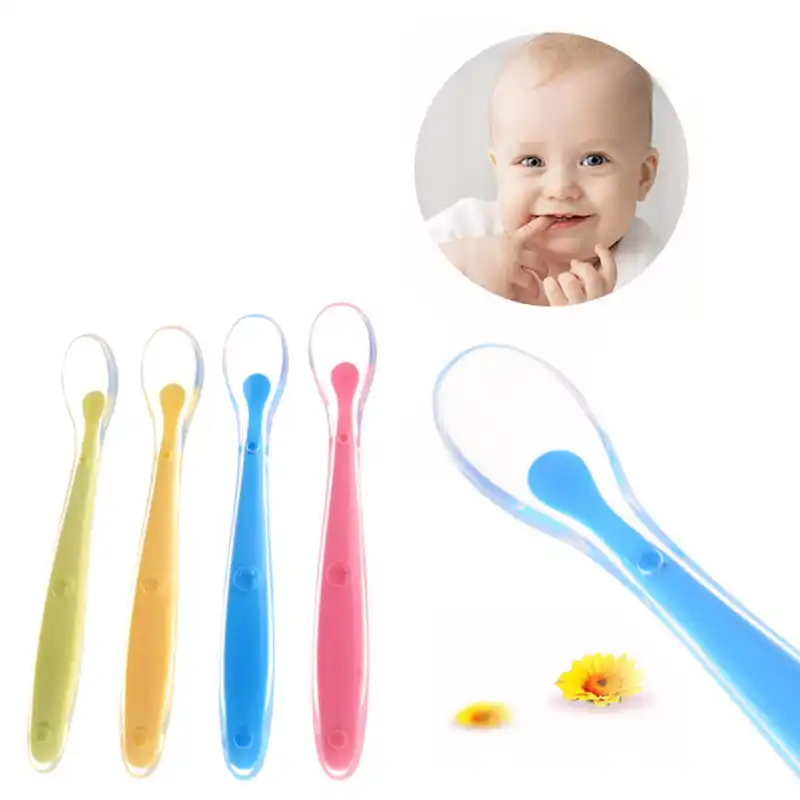
- Movement method passive. Mom must feed the baby, and hold his hand in her hand. Mom does not allow the spoon to turn over, teaching her to bring it to her mouth in a horizontal position. So the motor pattern of the skill of eating will be laid.
- Adult repetition method. When the mother brings the baby's hand with a spoon to her mouth, she stretches her lips with a tube and draws in its contents. The kid, repeating after the adult, eats food from a spoon.
- Multiple repetition method. Mom lets go of the baby’s hand with an empty spoon, and he lowers it into a plate, refilling himself with food again. When the skill is fixed in the baby, it will be possible to consider that the training program was successful in taking food from the technical side. With each meal, the skill will be fixed. However, a young child will quickly get tired of sitting at the table, he can often be distracted.
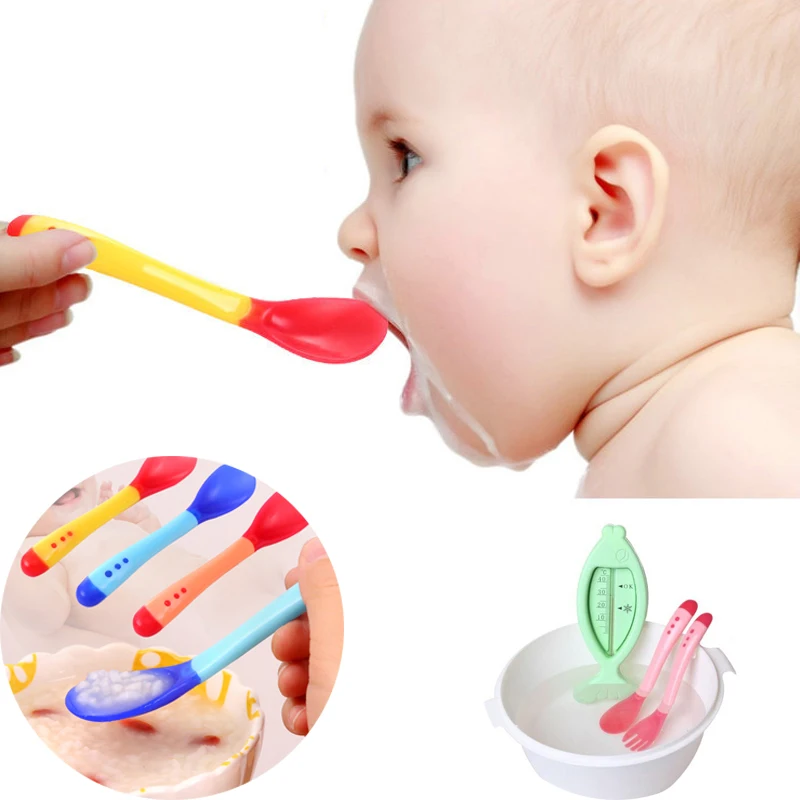 Therefore, the mother feeds him, taking another spoon, while the baby continues to eat food on his own with his spoon.
Therefore, the mother feeds him, taking another spoon, while the baby continues to eat food on his own with his spoon. - To feed your baby, you need to choose the “right” spoon: it should be shallow, rubberized, comfortable. You can easily find similar cutlery on the shelves of children's supermarkets. And sales consultants will tell you which model is better to choose in accordance with the age of the child.
- Show by example how to properly handle this cutlery. Be sure to say the name of the item ( "This is a spoon" ) and its purpose ( "They eat porridge, mashed potatoes, soup" ).
- The best thing a mother can do when teaching a child to use a spoon is to be tolerant of his little failures and rejoice at the first successes.
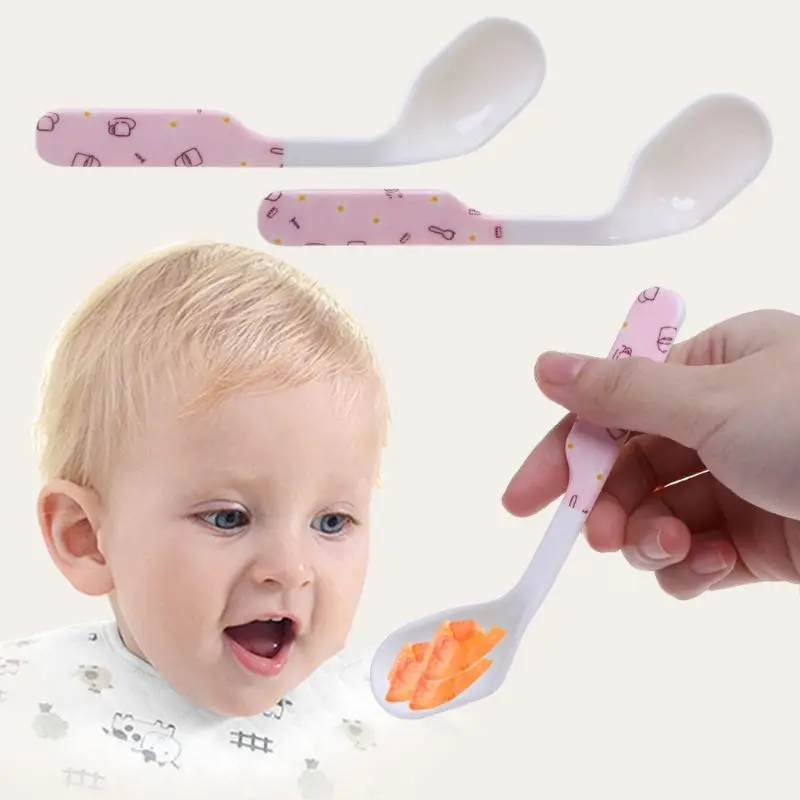 Help the baby in this difficult task for him, gently guide his hand at every stage - from scooping up porridge to sending it to his mouth. The child should feel your help and support. And such interaction with his mother will be not only useful for him, but also very pleasant.
Help the baby in this difficult task for him, gently guide his hand at every stage - from scooping up porridge to sending it to his mouth. The child should feel your help and support. And such interaction with his mother will be not only useful for him, but also very pleasant. - If the baby has learned to grab the porridge with a spoon and direct it to the mouth, there is no need to rush him. Give the baby some time. Sometimes self-meal can be delayed. Be patient! And soon the uncertain movements of the baby will become neat and precise.
- Remember that for a child, using a spoon is a process that requires concentration, effort, and coordination of movements. Therefore, such a thing can quickly tire him. Let the little one take a break (at this point, you can offer him a drink or wipe his soiled cheeks).
If parents are unable to determine the cause of the child's whims, it is worth contacting a specialist and strictly following his recommendations.
There are many "tricks" to feed the little capricious, and most of them are based on the awakening of interest
How to teach a child to complementary foods
The human body operates at the level of instincts, so even at home you can easily determine whether the baby is ready to switch to complementary foods. If the child does not show any interest in adult food, does not reach for plates of food, then it is too early to try to transfer him to new dishes. If, during family gatherings at the table, the baby tries to try something new, this indicates new needs of the digestive system.
In this case, some important points must be taken into account.
These are very simple but effective tips that will allow you to transfer your baby to complementary foods or revive his interest in boring dishes. The main thing is to constantly show patience, goodwill and imagination.
agushkin.ru
Daughters 8.5 months. All indicators are normal. One problem - nothing0005 does not want to eat from a spoon : only from a bottle or breast. The only thing he always eats is Danone yogurt. I understand perfectly well that this is not the best food for a child of 8 months, but if you do not give them, then the child generally remains on an exclusively liquid milk diet. I've tried everything I think, re-read every nutrition book, re-cooked every recipe for kids I could find. Nothing works. Sometimes the baby tries the first spoon , but does not want to continue eating in any way. And often I can’t push a single one at all spoons . I know that you can’t force a child to eat, because.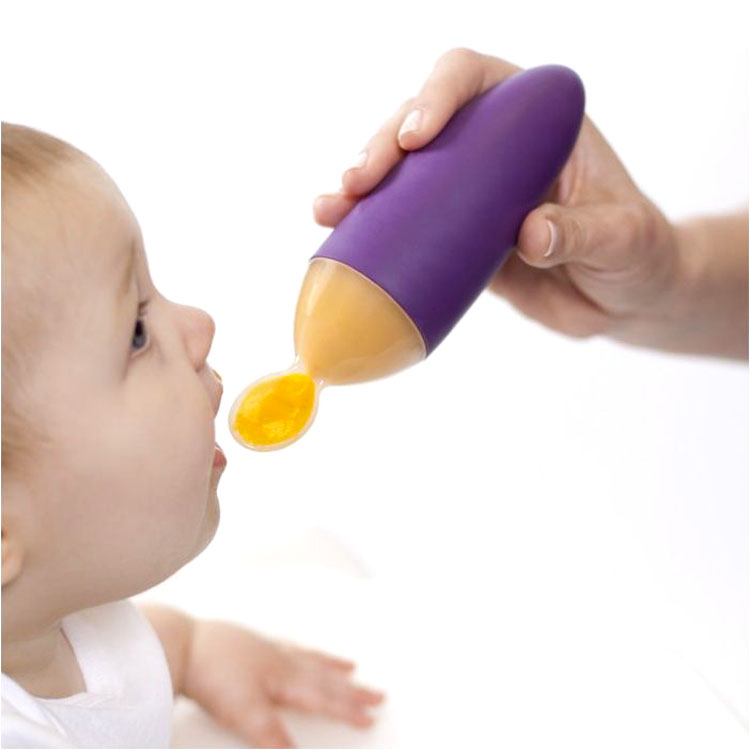 he may generally get an aversion to the process of eating. I tried not to feed for 4 hours and achieve hunger - to no avail: a spoon strike, but then I drink with pleasure from a bottle or from my chest. Tell me, please, what to do in such a situation? What is fraught with the fact that the child does not receive complementary foods and at 8.5 months feeds almost exclusively on breast milk and formula? Have you had similar patients? What to do?
he may generally get an aversion to the process of eating. I tried not to feed for 4 hours and achieve hunger - to no avail: a spoon strike, but then I drink with pleasure from a bottle or from my chest. Tell me, please, what to do in such a situation? What is fraught with the fact that the child does not receive complementary foods and at 8.5 months feeds almost exclusively on breast milk and formula? Have you had similar patients? What to do?
published on 28/11/2006 13:59
Answered by Komarovsky E. O.
The mentality of a Soviet woman is such that she cannot help but feed her child. Those. I understand that if you did not give food for 4 hours, then this is a civil feat for you. Believe me, I would have solved this problem in a maximum of two days. He sat me down, gave me what I consider necessary, from a spoon - refused a child - well, okay. No shouting, no persuasion. And after 2 hours - the same thing and again from a spoon .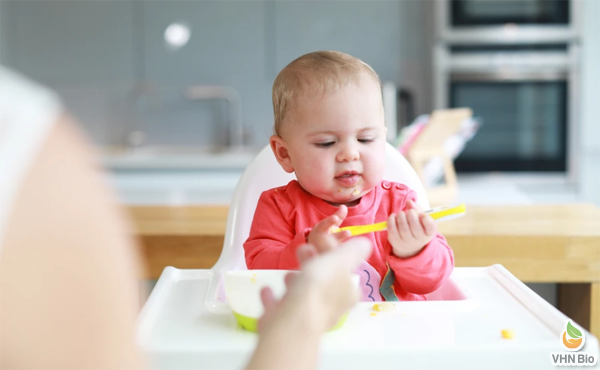 If you don't want to, goodbye. The hungrier a person is, be it an adult or a child, the less the selectivity of appetite. But if the child knows that0005 refuses to eat from a spoon , yells and gets his favorite boobs - so it's not you who are raising a child, but a child you. If a child under one year old does not receive anything other than breast or an adapted mixture, I am sure that no serious problems will arise.
If you don't want to, goodbye. The hungrier a person is, be it an adult or a child, the less the selectivity of appetite. But if the child knows that0005 refuses to eat from a spoon , yells and gets his favorite boobs - so it's not you who are raising a child, but a child you. If a child under one year old does not receive anything other than breast or an adapted mixture, I am sure that no serious problems will arise.
www.komarovskiy.net
Why does the child not want to eat with a spoon?
“The son does not want to eat with a spoon. He is 1 year and 7 months old. What to do in this case?
In the second year of life, the child is given the task of learning how to use a spoon so that by the age of 1.5 he can eat first and second courses himself. Mom and dad should help the child understand the actions with a spoon. The scheme of these actions must be worked out until automatic perception, then the skill will develop into a habit, which from the very beginning must be formed on the correct display.![]() Can buy silver spoon for children especially for eating. This is both useful and beautiful.
Can buy silver spoon for children especially for eating. This is both useful and beautiful.
How to teach a child to eat with a spoon?
Why does the child not eat from a spoon? He may simply not be able to do this and not see how his parents do it. A child under the age of three months begins to be placed in a child seat or high chair. Sitting in it, the child should rest his feet on the floor, his legs should not hang. This is important for the posture of the child and its formation: resting on the legs aligns the back and maintains the position “over the plate” for eating. The baby is tied to a bib made of a material that does not get wet. And the baby's clothes stay clean after eating.
The dishes must also be suitable for the baby's age. Table setting matters. A tablecloth or oilcloth is laid on the table, a bread box is placed so that the child takes bread himself, paper napkins so that the child wipes his mouth and hands, children's dishes. All this will attract the attention of the baby and increase his appetite.![]() Very soon he will recognize his plate, his cup, his spoon. And they really will be only his - this is a hygiene requirement from early childhood.
Very soon he will recognize his plate, his cup, his spoon. And they really will be only his - this is a hygiene requirement from early childhood.
womanest.ru
How to teach a child to eat with a spoon - 10 simple tips
10 tips to teach your child to eat with a spoon
razvitie-krohi.ru
Why won't my baby eat from a formula bottle?
Just like a pacifier, a regular breast milk bottle helps your baby get used to feeding on his own. It is not always possible for mothers to feed their child if there are urgent matters. What if the child refuses to take the bottle? Here are a few points that will definitely help in this matter.
It is not always possible for mothers to feed their child if there are urgent matters. What if the child refuses to take the bottle? Here are a few points that will definitely help in this matter.
Why does the baby refuse the bottle?
Initially, it is important to establish the reason why the baby refuses the bottle. There are a lot of such points, but these are the main 4 nuances that you should pay attention to.
Blend. The taste, temperature and even the smell are not to the liking of the baby. This is one of the most compelling reasons why a baby refuses a bottle. Sometimes, infant formulas with milk also have a different taste: for example, some are sweeter than others.
In this case, it is best to try all the options that are offered in order to settle on one thing. If the baby does not like the temperature of the bottle, then remember that it should be heated to 36 degrees, that is, in the same way as mother's milk.
Bottle. There are times when the child likes everything, but the shape of the nipple is not the same. He starts to spit it out, trying to get rid of it. Maybe he does not like the flow of the mixture, which is either fast or slow. That's why any pacifier needs to be selected and tested on the spot to make sure your baby likes it. Also, you can purchase several different nipples to change them and observe which one the little one will like.
He starts to spit it out, trying to get rid of it. Maybe he does not like the flow of the mixture, which is either fast or slow. That's why any pacifier needs to be selected and tested on the spot to make sure your baby likes it. Also, you can purchase several different nipples to change them and observe which one the little one will like.
No hunger. The child does not bottle feed because he simply does not want to eat. So, if you offer the baby milk, then he is likely to refuse it. On the other hand, it all depends on how many months the baby is, since the older the child becomes, the more milk is needed. At 2 months, the baby is unlikely to take a bottle in his hands, and at 6 he will drink from it to the fullest.
Body position. The position in which the baby is fed plays a huge role. Someone will be able to drink only in a sitting position, while others, on the contrary, need to be applied to themselves. This is another reason why the baby refuses the bottle completely.![]()
These are the main reasons why the baby does not want to drink on its own and requires the mother's breast. Be attentive to how the child behaves during feeding.
What should I do if my baby is not eating bottled formula?
The first thing to do is to be patient. Before you lies a tiny man who needs to be accustomed to his first independent experience. Not all babies begin to quickly get used to feeding, especially if the mother is not around.
If your baby doesn't want to eat bottled formula, follow the instructions below and they will definitely help. This is a plan for further action in case the baby asks only for the mother's breast.
What to do if the baby does not bottle feed:
- A good way to help your toddler is to split his meal into two parts. The first half of the meal is breastfed, the second is bottle feeding. So, some mothers take the baby in their arms, substituting their breasts, and then sit on a chair to change it with a bottle.

- sometimes it is only necessary to distract the child so that he does not notice the substitution. Stand up, walk around with the baby in your arms, you can sing a song or tell something, and then bring the bottle to his lips. He will think that this is his mother's breast and will begin to suck it with pleasure.
- never insist that the entire contents be drunk to the end. Let the baby eat as much as he wants and can. If he pushed the bottle away from him for the first time, then don't be angry. Do not regard this behavior of the baby as bad.
The only reason why a baby refuses a bottle of formula is that he does not like the new way of feeding. In this case, it is better to choose a pacifier that is shaped like your nipple. For the baby, it will be more familiar, and the sensations will become familiar.
How to make a baby drink water from a bottle?
Fluid intake is very important for the baby. It happens that the child does not drink water from a bottle. A spoon comes to the rescue, but with its help it is not possible to replenish a sufficient volume of the required liquid.
A spoon comes to the rescue, but with its help it is not possible to replenish a sufficient volume of the required liquid.
What to do if your baby won't drink from a bottle:
These are the most common steps for teaching a child to bottle drink. Keep a close eye on your little one, because only he can show you what he likes and what he doesn't. In any case, all children are initially afraid of bottles, believing that this is something foreign.
Keep a close eye on your little one, because only he can show you what he likes and what he doesn't. In any case, all children are initially afraid of bottles, believing that this is something foreign.
The task of every mother is to try to explain and show her child that this is a new way of feeding, which one day will come in handy.
imalishka.ru
The child eats complementary foods from a spoon
The child does not eat complementary foods
Starting to introduce complementary foods for a baby, many parents are faced with the fact that the child does not eat complementary foods. Of course, mothers are worried, asking questions to the pediatrician, looking for relevant literature. Let's try to figure out why the child does not want to eat complementary foods and how to find a way out of this situation.
The child does not eat complementary foods: the main reasons
Experts indicate the main reasons for the unwillingness of the baby to eat new foods.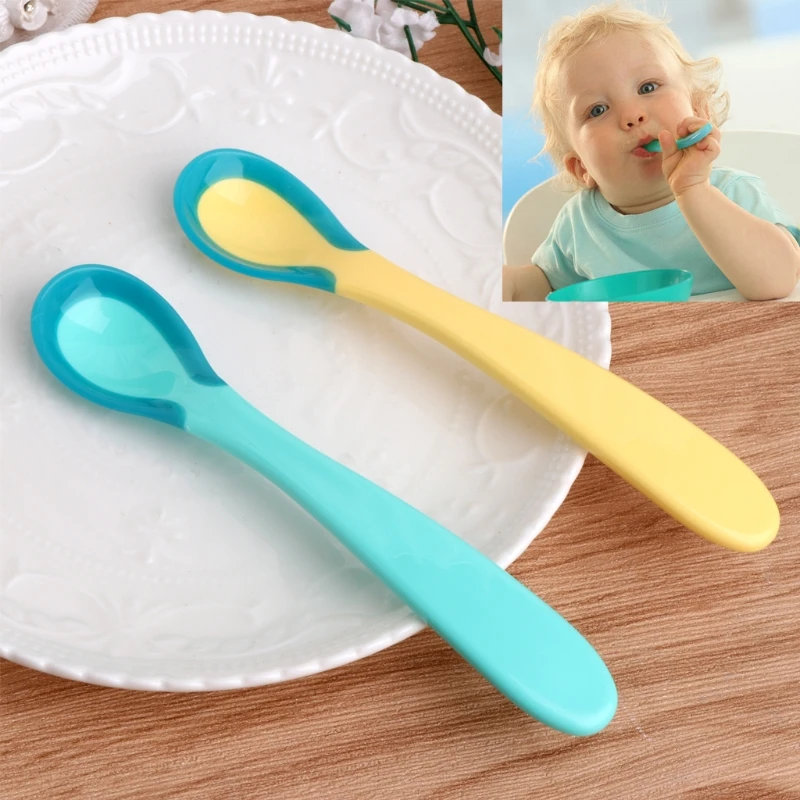

In any case, if the child does not want to eat complementary foods, there is no need to be upset. Mom needs to understand the reason for this reluctance and eliminate it. And only after that try to establish feeding the baby.
Baby refuses complementary foods: what to do
Baby nutrition experts and experienced mothers advise following some rules that will help if the child does not eat complementary foods.
Firstly, if the baby stubbornly refuses to introduce the first complementary foods, it is better not to insist.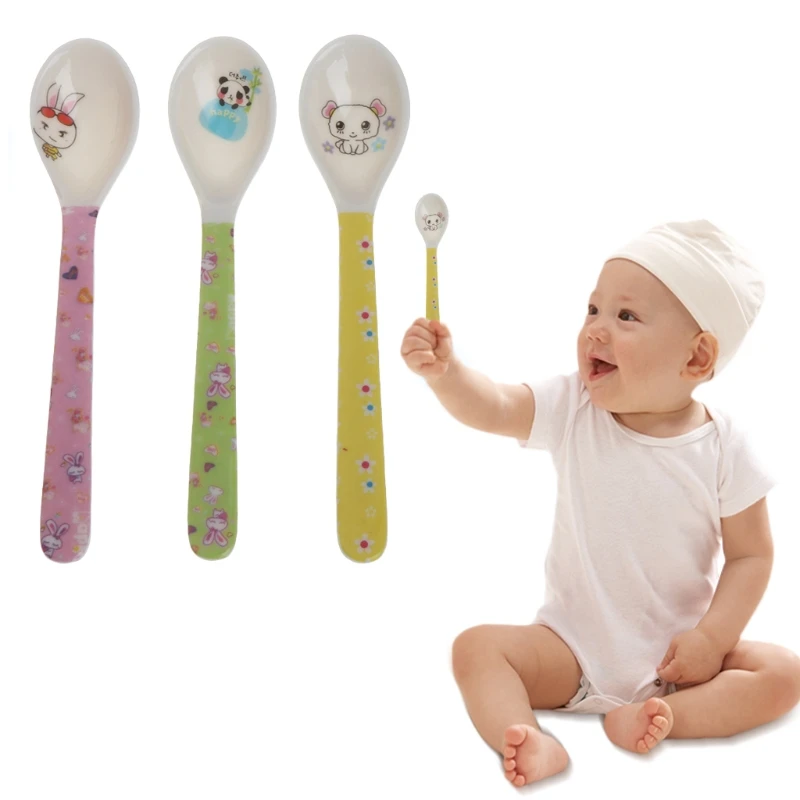 You just need to postpone the introduction of complementary feeding one to two weeks later. It is possible that after this time, the baby will be happy to try new food.
You just need to postpone the introduction of complementary feeding one to two weeks later. It is possible that after this time, the baby will be happy to try new food.
Secondly, you should try to feed your baby according to the schedule. Often the child does not eat complementary foods because he did not have time to get hungry. When feeding a baby at a certain time, by this time he will have produced gastric juice. Besides the fact that it helps to increase appetite, the child will digest food better.
Third, do not force feed your baby. This can cause him negative emotions associated with the intake of complementary foods. Even with an appetite, the baby may subconsciously resist eating. Sometimes in such situations, the child may experience habitual vomiting.
Fourth, don't try to feed your baby food that he doesn't like. Like all people, the little man can have favorite and least favorite foods. Therefore, no matter how useful the product is, you should not force-feed your baby with it. In the future, this may cause the child not to eat complementary foods.
In the future, this may cause the child not to eat complementary foods.
Fifthly, the mother must demonstrate to the child that the process of eating is very pleasant. The kid needs to see that food from a spoon can be a pleasure. In addition to the above rules, each mother has her own little tricks and tricks on how to get the baby to eat complementary foods.
There is no need to worry if the child does not want to eat complementary foods. Having understood the reason, it is quite possible to establish a normal full-fledged feeding of the baby.
How to teach a child to eat with a spoon - 10 simple tips
The skill of using a spoon while eating is the very first self-service skill that a baby will learn. Parents turn to spoon-feeding when they begin to introduce the first meal of porridge or puree. In most cases, this occurs at 4.5-6 months. At this age, children are not yet able to eat with a spoon on their own. And if they hold this cutlery correctly, then they cannot feed themselves. Therefore, parents will have to be patient and calm until their baby learns to use a spoon. Our advice and recommendations will help moms and dads quickly and easily accustom their kids to a spoon.
Therefore, parents will have to be patient and calm until their baby learns to use a spoon. Our advice and recommendations will help moms and dads quickly and easily accustom their kids to a spoon.
10 tips for teaching your baby to use a spoon

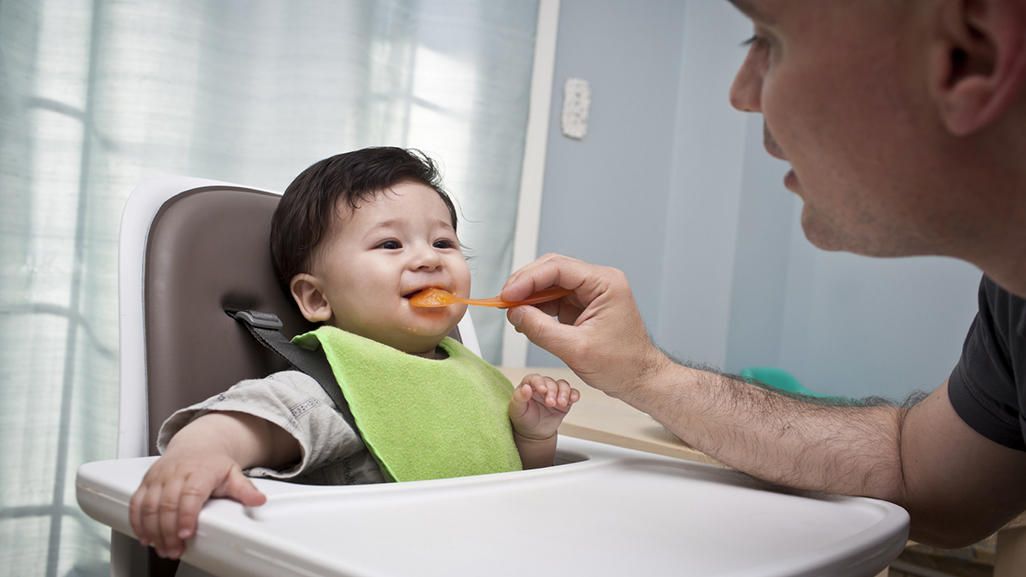
Do not forget that before the baby learns to use a spoon carefully, more than one month will pass. For him, this new and complex skill means much more than simple self-care. This is a new stage in its development!
How to teach a child to eat with a spoon
It is impossible to look without tenderness at such a small ball of happiness that lies in the crib, sparkling eyes and smiling at your mom and dad. It is incredibly pleasant to watch how a child grows and develops, learns something new and improves his skills every day. And at the moment when parents begin to introduce the first complementary foods to the baby, the question arises of how to teach a child to eat with a spoon and at what age to start doing it.
A child's first introduction to a spoon
It is very important that the first introduction to a spoon is unobtrusive. For the first time, even a four-month-old child can be given to hold this tableware. Parents know that young children, starting at four or five months old, begin to actively explore the world and this age can be an ideal start in order to introduce the child to such a necessary subject.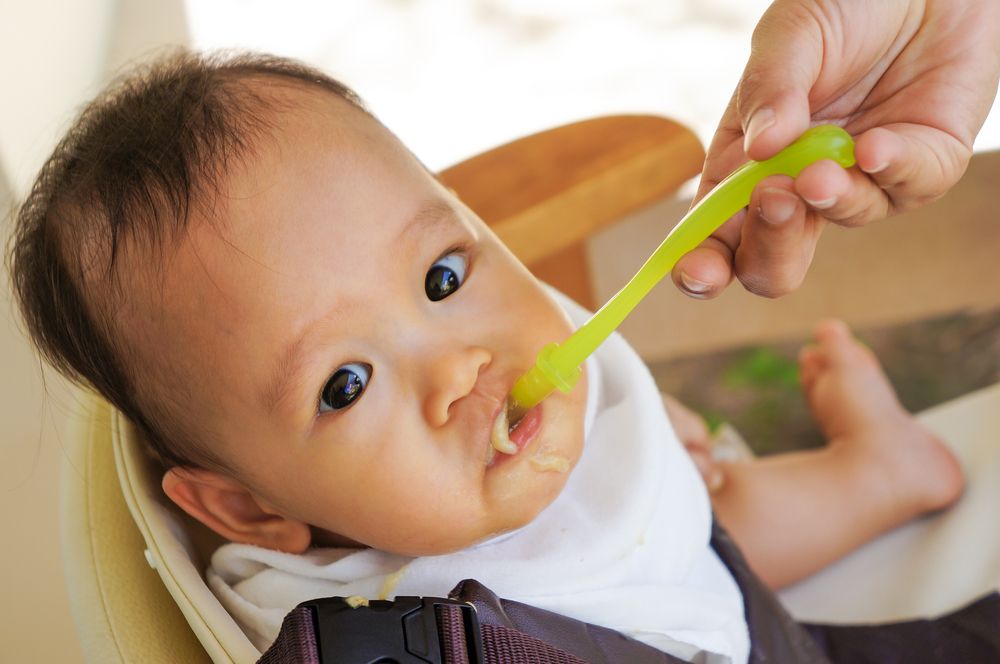
To teach a child to eat with a spoon, you need to do everything in a playful and, most importantly, cognitive way. Moreover, there may be several options for which spoon to give the child.

As soon as the spoon gets into the little fingers, it immediately goes into the mouth. This is a natural reflex, when the baby tries to try all the objects that he can get with his hands “by the tooth”. At such moments, it is important to say to the child: “We will be yum-yum from the spoon”, despite the fact that it is still empty. Although the child is small, you should always talk to him, explaining absolutely all the actions. In the future, this will help him understand what his parents want from him.
Step two - put food on the spoon
From the age of six months, parents give the baby its first "adult" food - complementary foods in the form of cereals or mashed potatoes.
Therefore, it is during this period that we teach the child to use a spoon, placing a small amount of food there.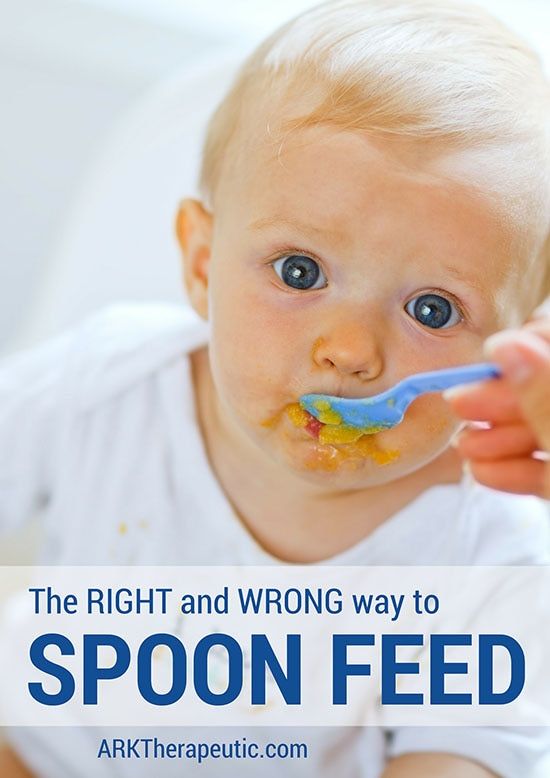 Give the spoon to the child's hand, but at the same time, with your hand, help the spoon with food to get into the baby's mouth. At the same time, it is also useful to tell the child that he is eating porridge (potato, apple, banana.).
Give the spoon to the child's hand, but at the same time, with your hand, help the spoon with food to get into the baby's mouth. At the same time, it is also useful to tell the child that he is eating porridge (potato, apple, banana.).
The most important thing is that now the spoon is no longer an unidentified object, and therefore the child will take food from it without any problems. You can also give the baby to drink water from a spoon. Perhaps, for the first two weeks, the baby will only adapt to the fact that the spoon is no longer empty and you need to take food from it, but over time, especially if he likes the dish, eating from a spoon with his mother's help will become familiar to him.
Step three - we completely trust the spoon to the child
When to teach the child to eat from a spoon on his own? To teach a child to use a spoon, one must not miss the moment when he takes the initiative to eat on his own, without the help of his mother.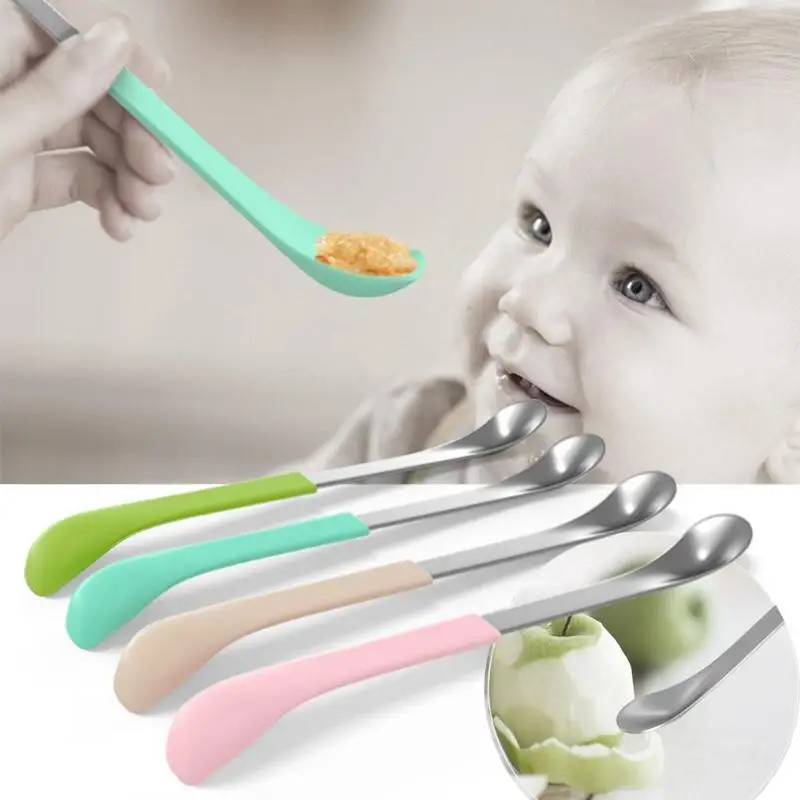 This is a signal - it's time to completely entrust the spoon to the child. This usually happens between the ages of nine and ten months, but it is possible that it will happen earlier.
This is a signal - it's time to completely entrust the spoon to the child. This usually happens between the ages of nine and ten months, but it is possible that it will happen earlier.
Naturally, for the first few weeks after each meal, you will need to wash the child, the table and the floor in the kitchen from food that “little” did not get into the child’s mouth. Do not be afraid - this is a very important step in teaching a child to eat with a spoon. Be patient and soon the baby will eat much more food than miss it from a spoon on the floor or table. Therefore, at first it is better to put the child a double or triple serving of food on a plate.
Be sure to support your child in such a difficult task as learning to eat from a spoon, because it requires a lot of effort, concentration and attention. Do not hesitate to praise him after each independent hit with a spoon in his mouth. The baby will see that his mother is not indifferent to his achievements and will try to eat better.

